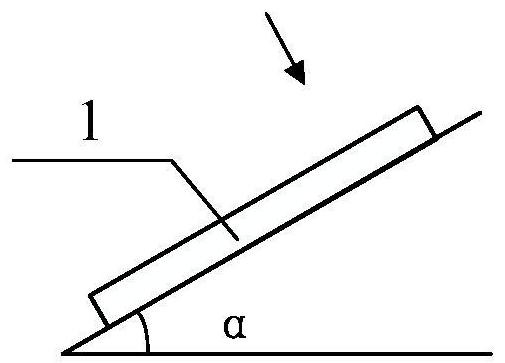A V-groove-based invisible droplet guidance method
A V-groove and droplet technology, applied in the analysis of materials, instruments, etc., can solve the problems of complex operation, inability to guide non-magnetic droplets, and easy derailment
- Summary
- Abstract
- Description
- Claims
- Application Information
AI Technical Summary
Problems solved by technology
Method used
Image
Examples
Embodiment 1
[0040] (1) Select a hydrophilic substrate. In this embodiment, the substrate material is an acrylic plate, and a V-shaped groove with a width of 0.4 mm, a depth of 4 mm, and a linear track with a path length of 180 mm is designed.
[0041] (2) Carve a V-groove track on the substrate body by using a precision numerical control machine tool.
[0042] (3) Use a high-speed camera to detect the quality of the V-groove, determine the precise size of the V-groove, and select a qualified V-groove track with a width of 0.4mm and a depth of 4mm for testing.
[0043] (4) Drop water droplets with a volume of 63 μL on the track, adjust the inclination angle α of the guiding device to 30°, and the included angle with the direction of the component of gravity on the inclined plane, that is, the deflection angle β, to be 10°, so that the droplets are on the track inner movement.
[0044] In the experiment, the droplets will slowly infiltrate into the V-shaped groove track, and form a liquid ...
Embodiment 2
[0046] (1) Determine the material of the hydrophilic substrate. In this embodiment, the substrate material is an acrylic plate. The width of the V-shaped groove is designed to be 0.4mm, the depth is 4.3mm, 3.6mm, 3.0mm, 2.0mm, and the path length is 180mm. W-shaped track.
[0047] (2) Carve a V-groove track on the substrate body by using a precision numerical control machine tool.
[0048] (3) Use a high-speed camera to detect the quality of the V-groove, determine the precise size of the V-groove, and select a V-groove track that meets the above design requirements for testing.
[0049] (4) Drop water droplets with a volume of 63 μL on the four tracks respectively, adjust the inclination angle α of the guiding device to 30°, and the deflection angle β to 0°, so that the droplets move in the track.
[0050] In the experiment, the droplets will slowly seep all over the V-groove track, and recondense into droplets at the lower end of the track. Due to the different depths of t...
Embodiment 3
[0052] (1) Select a hydrophilic substrate. In this embodiment, the substrate material is an acrylic plate. The design determines that the width of the V-shaped groove is 0.4mm, the depth is 4.3mm, 3.6mm, 3.0mm, and 2.0mm, and the path length is 180mm. The S-shaped curved track.
[0053] (2) Engraving a V-shaped groove on the substrate body by using a precision numerical control machine tool.
[0054] (3) Use a high-speed camera to detect the quality of the V-groove, determine the precise size of the V-groove, and select a V-groove track that meets the design requirements for testing.
[0055] (4) Drop water droplets with a volume of 63 μL on the four tracks respectively, adjust the inclination angle α of the guiding device to 30°, and the deflection angle β to 0°, so that the droplets move in the track.
[0056] In the experiment, the droplets will slowly seep all over the V-groove track, and recondense into droplets at the lower end of the track. Due to the different depths...
PUM
 Login to View More
Login to View More Abstract
Description
Claims
Application Information
 Login to View More
Login to View More - R&D
- Intellectual Property
- Life Sciences
- Materials
- Tech Scout
- Unparalleled Data Quality
- Higher Quality Content
- 60% Fewer Hallucinations
Browse by: Latest US Patents, China's latest patents, Technical Efficacy Thesaurus, Application Domain, Technology Topic, Popular Technical Reports.
© 2025 PatSnap. All rights reserved.Legal|Privacy policy|Modern Slavery Act Transparency Statement|Sitemap|About US| Contact US: help@patsnap.com



